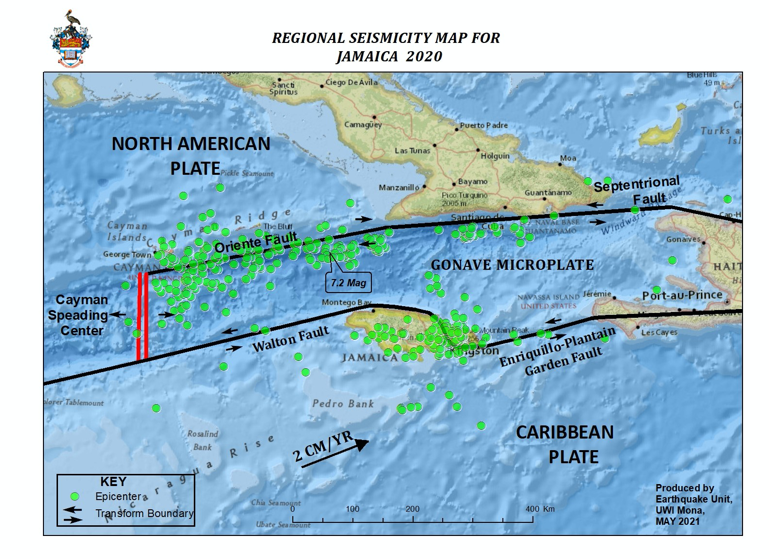Week Two Post: Tectonic Plates and Plate Boundaries in Jamaica
Hello everyone! Welcome to my Week 2 Blog Post. :)
This week we learned about tectonic plates, more specifically understanding their boundaries, which is vital in determining how they contribute to devastating natural disasters such as volcanic eruptions and earthquakes.
For my chosen country, Jamaica, they are located on the boundary of two tectonic plates called the Gonave and the Carribbean. Due to the fact that these plates continuously converge, which means they move toward one another, uplifts occur in Jamaica. Moreover, this convergence is what makes Jamaica's beautiful, lush land so mountainous, but it also carries the inherent risk of frequent earthquakes.

Throughout history, Jamaica has experienced a number of deadly earthquakes, with the largest and most damaging one occurring on June 7, 1692 at a 6.2 magnitude. This earthquake is famously known as the Port Royal earthquake, which is a city in Jamaica where the highest number of people lost their lives due to a portion of the town sinking into the sea. Also, this quake contributed to an outbreak of yellow fever that claimed the lives of 2,000 people, and even more passed as a result of the tide wave that followed.

Fortunately, Jamaica has an Office of Disaster Preparedness and Emergency Management that encourages people to prepare themselves for earthquakes. More specifically, they provide information on the warning signs of earthquakes, access to emergency response teams, and recovery for those affected by these natural disasters.

References: https://earthobservatory.nasa.gov/images/150517/jamaica#:~:text=Jamaica%20is%20located%20at%20the,7%2C402%20feet)%20above%20sea%20level.
https://www.mona.uwi.edu/earthquake/jamaicas-earthquake-history#:~:text=Jamaica%27s%20recorded%20history%20is%20rife,town%20sank%20into%20the%20sea.
https://www.iris.edu/hq/inclass/animation/jamaicatectonics_and_earthquakes
https://www.odpem.org.jm
I'm looking forward to how this connects with seismicity specifically this week!
ReplyDelete